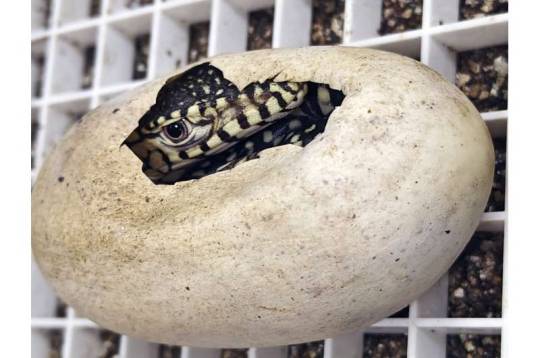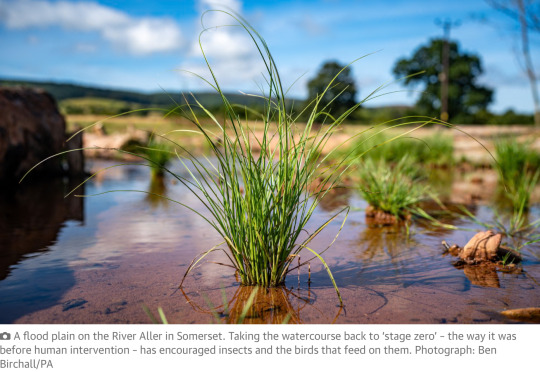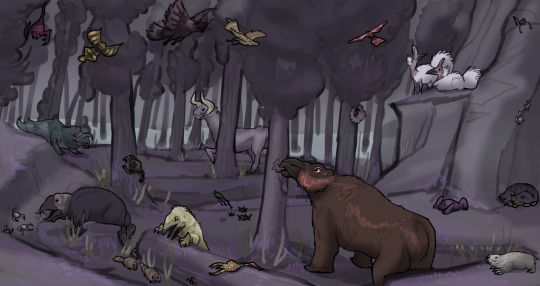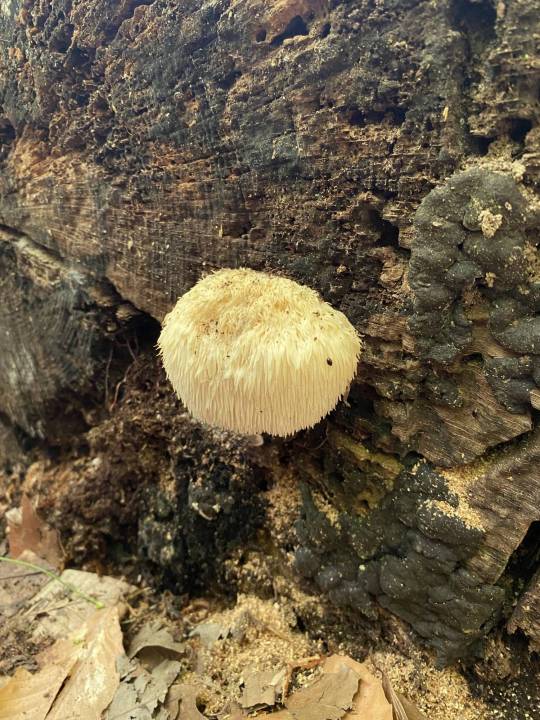#world biodiversity
Explore tagged Tumblr posts
Text
penguins at KING GEORGE ISLAND, Antarctica
(source: associated press | 11 dec 2023)
0 notes
Text
"Over 10,000 square miles of additional protected area will be added to the Heard and McDonald Islands in Australia’s far southern territorial waters.
Coupled with other expansions of existing marine sanctuaries, it puts Australia on course to have 52% of its ocean territory protected, more than any other nation, by the end of the current administration’s term.
“This is not just a huge environmental win for Australia, it’s a huge environmental win for the world,” said Australian Environment Minister Tanya Plibersek. “This is a unique and extraordinary part of our planet. We are doing everything we can to protect it.”
Located over 2,000 miles south of the Australian continent, Heard and McDonald Islands make up about 144 square miles of volcanic terrain that represent one of the most remote places on Earth.
They are important breeding grounds for 19 species of bird, including 4 species of penguins, but dozens of other bird species take refuge there. It is a UNESCO Natural Heritage Site, and a RAMSAR Wetland in addition to being an Australian national marine sanctuary.
The quadrupling of the sanctuary borders amounts to 11.5 thousand square miles, (30,000 sq km) of additional protection, but represents one-tenth of the total proposed expansions of marine protected areas.
Under the current guidance, prepared by nationally sanctioned scientific surveys, the total marine protected areas will make up an area the size of Italy.
The current administration of Prime Minister Anthony Albanese is seeking to establish a new environmental protection agency, as well as set a high bar for the country’s commitments to an international philosophy of conservation governance known shorthand as “30×30” or “30 by 30,” which states that to prevent the worst effects of general environmental degradation worldwide, 30% of land and waters should be under protections. Often the second thirty refers to a hypothetical 2030 deadline."
-via Good News Network, October 10, 2024
#australia#islands#unesco world heritage site#marine protected area#marine sanctuary#30 by 30#birds#environment#environmental news#climate action#climate hope#biodiversity#conservation#good news#hope
2K notes
·
View notes
Text

It’s World Orangutan Day! Weighing up to 200 lbs (90.1 kg), the orangutan (genus Pongo) is the largest arboreal animal on the planet! This tree-dweller is also Asia’s only great ape. The critically endangered primate is mostly herbivorous, with a diet that consists of flowers, nuts, and fruit. This species’ historic range in Southeast Asia has shrunk down to just two islands—Borneo and Sumatra—and their population has dipped sharply in the last century. Because they live in lush tropical forests, orangutans are especially vulnerable to deforestation, an ongoing threat as agriculture encroaches on their habitat.
Photo: Eric Kilby, CC BY-SA 2.0, flickr
#science#nature#natural history#animals#fact of the day#did you know#endangered species#orangutan#world orangutan day#animal facts#biodiversity#primates#great apes#mammalogy#conservation#wildlife
448 notes
·
View notes
Text
Making worlds is not limited to humans. We know that beavers reshape streams as they make dams, canals, and lodges; in fact, all organisms make ecological living places, altering earth, air, and water. Without the ability to make workable living arrangements, species would die out. In the process, each organism changes everyone’s world. Bacteria made our oxygen atmosphere, and plants help maintain it. Plants live on land because fungi made soil by digesting rocks. As these examples suggest, world-making projects can overlap, allowing room for more than one species. Humans, too, have always been involved in multispecies world making. Fire was a tool for early humans not just to cook but also to burn the landscape, encouraging edible bulbs and grasses that attracted animals for hunting. Humans shape multispecies worlds when our living arrangements make room for other species. This is not just a matter of crops, livestock, and pets. Pines, with their associated fungal partners, often flourish in landscapes burned by humans; pines and fungi work together to take advantage of bright open spaces and exposed mineral soils. Humans, pines, and fungi make living arrangements simultaneously for themselves and for others: multispecies worlds.
Anna Lowenhaupt Tsing, The Mushroom at the End of the World: On the Possibility of Life in Capitalist Ruins
205 notes
·
View notes
Text
Dandelion News - December 15-21
Like these weekly compilations? Tip me at $kaybarr1735 or check out my Dandelion Doodles for 50% off this month!
1. 7 good things humanity did to combat climate change in 2024

“The UK […] closed its final coal power plant in October. [… In India,] the share of power provided by coal dropped below 50% for the first time since the 1960s. [… A non-profit] has provided solar energy to more than 6,000 of the poorest Nigerians.”
2. California Voters Said Yes to Prop 4, a Win for Birds, People, and Our Shared Future

“[…] Prop 4 will direct millions of dollars for water conservation and habitat restoration [… and] includes a requirement that at least 40% of its funding go to lower-income and climate-vulnerable communities.”
3. This Pennsylvania school is saving big with solar and EV school buses

“Steelton-Highspire’s solar arrangement will save it about $3.6 million over the next 20 years. As for the electric school buses, Steelton-Highspire is one of thousands of districts able to access federal rebates from a $5 billion program created by the 2021 Bipartisan Infrastructure Law.”
4. Autism Speaks Canada shuts down in January. Good.

“As Canada’s autistic-led advocacy group […] we are relieved that Autism Speaks Canada will be shutting down in January of 2025. This is an opportunity for autistics and our families to collaborate locally to build new, neuro-affirming spaces and projects.” [If you don’t know why this is a good thing, please click here]
5. LA Zoo hatches first-ever perentie lizards, one of largest lizard species in the world

“The LA Zoo is one of only three institutions accredited by the Association of Zoos and Aquariums that have successfully reproduced them[….] Adult perentie lizards can reach more than 8 feet (2.4 meters) in length and can weigh more than 40 pounds (18 kilograms), the zoo said.”
6. Research reveals an inexpensive fix for California's struggling wildflowers

“[… R]aking [“dead, invasive grasses”] is decidedly less labor-intensive and more ecologically friendly [than other management techniques…, but doing so] increased plant diversity overall, reducing invasive grasses […] while increasing both native and exotic wildflowers[….]”
7. A new EV battery could last more than 8 times longer, travel farther
“[… A] typical battery lasts 2,400 cycles, while the new battery lasted more than 20,000 cycles. [… Used batteries could be repurposed] for grid storage on wind and solar farms, the study notes.”
8. Women who are homeless in Boston find safe space and care at 'HER Saturday'

“Women can get lots of other care on the spot — from sick visits and basic health screenings to Pap smears and contraception. [… They also come for] "The makeup, the snacking and the girl talks. And ... picking out a new outfit," said Pinky Valentine [“a homeless transgender woman”].”
9. ‘It absolutely took off’: five UK biodiversity success stories

“[…N]ew methods are emerging to preserve, improve and generate new habitat and, in many cases, attract back or reintroduce species not seen for decades. After a nudge, ecosystems are often doing much of the heavy work themselves.“
10. Personalized gifts really do mean that little bit more to your loved ones, says research

“Research has also shown that receivers of personalized gifts are more likely to take care of them. […] In this sense, gift-giving can be not just an emotional exchange, but also a more sustainable one. A carefully preserved [personalised] gift avoids waste and brings long-term satisfaction.”
December 8-14 news here | (all credit for images and written material can be found at the source linked; I don’t claim credit for anything but curating.)
#hopepunk#good news#clean energy#world news#california#birds#habitat restoration#pennsylvania#school#electric vehicles#solar power#actually autistic#autism speaks#canada#autistic community#lizard#zoo#wildflowers#battery#technology#boston#homelessness#unhoused#biodiversity#christmas gift#uk#unique gifts#holiday#christmas#community
60 notes
·
View notes
Text
For #WorldDolphinDay:

Plate VIII from Giant Fishes, Whales, and Dolphins, field guide #SciArt from 1949.
A. Common Porpoise B. Commerson's Dolphin C. White-beaked Dolphin D. Common Dolphin
Biodiversity Heritage Library
#animals in art#animal holiday#20th century art#1940s#sciart#scientific illustration#natural history art#field guide art#dolphin#dolphins#World Dolphin Day#BHL#biodiversity heritage library#ocean life#marine mammals#cetaceans#marine biology#species ID
32 notes
·
View notes
Text
me: i am doing very important things. big deep research for my story. lots of research. research you woudlnt even believe. for my story. important work. very important for my story.
my google tab:

#HRM.#time to ask the age ol question here folks#do fairies have hunting laws.#do fairies believe in ethical conservative efforts of maintaining fairy animals' biodiversity in the fairy world#would it be illegal to hunt a worm on a string and wear them like fox fur#is there any moral or ethical implications of fairyworld that blonda and cookie both have fox furs of clear fairy animals#many such thoughts.
26 notes
·
View notes
Text
A new no mans sky update came out which means I'm yet again impressed by how much work those devs do.
They've really changed it so much from that awful unfinished mess it was at release
14 notes
·
View notes
Text


The common forest of Koolu world. With all its critters. Both during the long winter and the short spring, in which a lot more of the cold blooded invertebrates come out of hiding.
#spec evo#alien world#alienart#creature#worldbuilding#cold weather#creature design#biodiversity#ecosystem#alien ecosystem#koolunku world
220 notes
·
View notes
Text
nudibranchs are SOOOO crazy. top 5 little guys of all time
#personal#he is mesmerized by the beautiful biodiversity of this world#i did a final in college where i drew a bunch...should try drawing them agaiN
37 notes
·
View notes
Text
(source: reuters | 20 sep 2023)
Tasmanian tiger.
Because of humans, the species is now extinct.
But that does not mean scientists have stopped learning about it. In a scientific first, researchers said on Tuesday they have recovered RNA - genetic material present in all living cells that has structural similarities to DNA - from the desiccated skin and muscle of a Tasmanian tiger stored since 1891 at a museum in Stockholm.
0 notes
Text

Ce qu'on appelait autrefois la prairie
33 notes
·
View notes
Text
Resolutely not reblogging a post about the UK biodiversity crisis to point out that drastic declines in biodiversity in the last 20-100 years do not, necessarily, mean that the entire history of human cultivation of nature here is catastrophic. Like, I get the point the person was making and I also think that the 'we made this green and pleasant land' rhetoric is usually thinly-veiled nationalist chauvinism, but also please think about the statistics you're using.
If your stats all point to the major damage being in the last century or two, this relates to industrialisation, industrial farming, power consolidation, and un/deregulation, not the activities of ordinary farmers 500 years ago or whatever. Therefore, it's not actually countering the points the 'green and pleasant land' chuds are talking about.
#a huge part of our current biodiversity crisis is in fact the fact that we *don't* use the land like we used to#we invested in industry artificial fertiliser and nimbyism instead#and like yes those were organic products of our history#but the strand of history that will be most instructive is the history of power and power relations#most people here for most of history/prehistory existed in a reasonable equilibrium with the natural world#were we ecosystem engineers on the level of the indigenous people of the americas? absolutely not#but that's a fairly high bar to clear they were/are extremely good at it
10 notes
·
View notes
Photo

Check out this lion's mane mushroom snuggled up against an old log, a rare find in the wild! Its shaggy, white tendrils truly make it a forest treasure to behold.
#lion's mane mushroom#foraging#forest finds#nature photography#rare mushrooms#fungi#wild mushrooms#woodland wonders#nature treasures#mycology#shaggy fungus#mushroom hunting#forest floor#natural world#biodiversity
17 notes
·
View notes
Note
SUNNY IF YOU'RE STILL ACCEPTING ASKS FOR THE ASKGAME MAYBE 1 & 17 IF YOU'RE UP FOR IT!!! I HOPE YOU HAD WONDERFUL SWEET DREAMS KISSES YOUR HANDS 💞💞💞
HI GRAY!!!!!!!!! WHOA!!!!!!!!! GRAY IN MY INBOX!!!!!!!!!!! MISSED YOU BELOVED!!!!!!!!!!!!!! I AM KISSING YOU RIGHT ON YOUR CHEEK
1. the character everyone gets wrong
HMM i feel like i usually don't think of characterization as right or wrong or at least sometimes it can be wrong but satisfying and sometimes it's just a version of them with emphasis on different traits... and anyway even if i've seen some egregious characterizations i wouldn't say EVERYONE does them. maybe apollo riordanverse. he is a complicated beloved character and for some reason way too many people fail to realize that he is in fact not always presenting himself honestly
17. there should be more of this type of fic/art
CHARACTER STUDIES. WE CAN NEVER HAVE ENOUGH CHARACTER STUDIES.
RENJING. WE CAN NEVER HAVE ENOUGH RENJING.
PROBLEMATIC SEX WRITTEN PRIMARILY FOR THE AUTHOR. WE CAN NEVER HAVE ENOUGH OF THIS.
aromantic fics, art with religious themes, renjing, fics about sibling and other gen relationships, extreme kink fics, renjing, body horror, self indulgent fandom fusions and crossovers, renjing, renjing,
#there should be more of whatever everyone wants to create#is the ultimate answer#GO FORTH BE FREE THE WORLD NEEDS IT IT'S BIODIVERSITY#☁️#🌃#also i have that aromantic hanahaki fic finished and drafted but i'm trying to hold off on posting it until the current fic is done
10 notes
·
View notes
Text


buckle down lads ya boy has #thots
#i'm actually mad#why am i mad#more importantly how does a game with THIS level of marine biodiversity feel so lifeless and empty#animals don't eat each other or play or ANYTHING#there's absolutely nothing to do but collect salvage and photo op#which would be fine if it wasn't FIFTY FUCKING DOLLARS#you can't even call it a sandbox really not when blue world let you curate A WHOLE AQUARIUM#too bad i bought it digital oh well might as well get some funny photos out of it#abzu#abzu game#endless ocean#endless ocean luminous#vick thots
10 notes
·
View notes